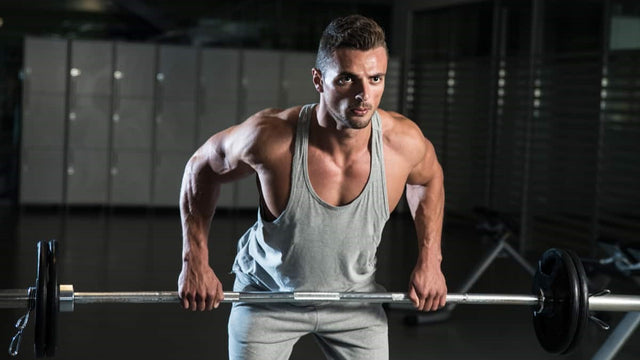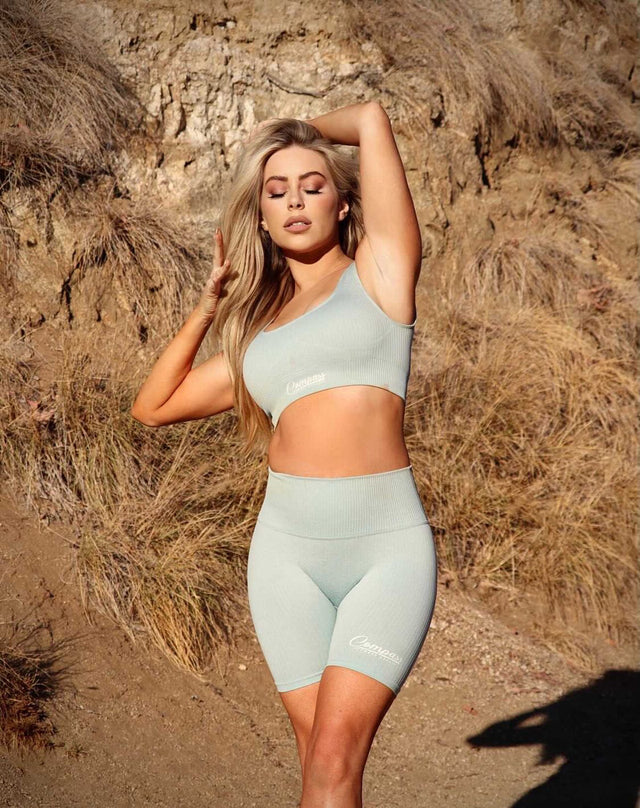10 Best Muscle Building Back Exercises
Do you want to build a strong back? Do you feel as though your training just isn’t yielding the results you want?
It’s time to get hyper-focused on your back training! Not only does training your back help build strength overall, it also helps prevent injuries and sculpt that all-important V-shape, which makes your waist look smaller and your shoulders wider.
Your back muscles are some of the largest muscles in the body to train. If you want a strong, aesthetically symmetrical and functional back then you need to target all the muscles in your back evenly with the exercises you choose.
Your back can be divided into two sections:
Superficial extrinsic muscles of the back: Trapezius, latissimus dorsi, rhomboid major, rhomboid minor, and levator scapulae.
Intermediate extrinsic muscles of the back: Serratus posterior superior and serratus posterior inferior muscles.
In this post, we are going to give you the best back exercises to build strength, shape, and functionality. Get your protein shake prepared and let’s GO!
1. The Barbell Row

The bent-over barbell row is a full-body, compound exercise working multiple muscle groups often used for both bodybuilding and powerlifting. It is a great and effective exercise for increasing strength and muscular size.
How to: Stand with your feet shoulder-width apart in front of your loaded barbell. Bend your knees and lean forward from the waist keeping your back straight, neck in line with the spine, and your knees should be bent. Grip the bar with your hands (palms facing down), just wider than shoulder-width apart and let it hang with your arms straight.
Tense your core and squeeze your shoulders together to row the weight up until it touches your core, then slowly lower it back down again.
Benefits of this move: Helps you to develop a strong back, improves your posture, increases the weight on your deadlift and builds more muscle mass to name but a few.
Muscles targeted: Latissimus dorsi, biceps, trapezius, rhomboids, posterior and rear deltoids and other small muscles that act on the shoulder blades and shoulder joint.

2. The single-arm dumbbell row

The single-arm dumbbell row is an excellent isolation exercise to work each side of the latissimus dorsi (lats) evenly. It’s a move that is excellent for crafting symmetry and strength.
How to: Grip the dumbbell, arm fully extended, back straight and lift up to your chest, concentrating on lifting it with your back and shoulder muscles rather than your arms. Keep your chest still as you lift. At the top of the row, contract your shoulder and back muscles. Lower the dumbbell slowly until your arm is fully extended again.
Benefits of this move: The row improves your posture, stabilizes and strengthens your core, and sculpts your upper, mid, and lower back.
Muscles targeted : Latissimus dorsi (lats) the entire back, shoulders, and arms (the trapezius, rhomboids, teres major and minor, deltoids, infraspinatus, biceps, brachialis, brachioradialis, and even pecs).
3. Barbell deadlift

A big compound move that effectively works several muscles in the body including the legs and back. The deadlift is a staple strength training exercise in which
How to: Stand with your mid-foot under a loaded barbell. Grip the bar, one hand over, one hand under. Bend over without bending your legs. Bend your knees and drop into position by bending your knees until your shins touch the bar. Keep your head up, lift your chest. Straighten your back by raising your chest pulling the bar off the floor perpendicular to your hips. Lower back down to the starting position.
Benefits of this move: Stronger back, increased movement efficiency, stronger core, release anabolic hormones.
Muscles targeted: Trapezius, lats, and erector spinae, as well as the gluteus maximus with further work on the quadriceps femoris, hamstrings.

4. Lat pulldown

The pull-down exercise is a popular strength training exercise designed to develop the width in the latissimus dorsi muscle. It is a staple move in developing that coveted v-taper, helping to make your waist look smaller, creating a more aesthetically pleasing silhouette.
How to: The lat pulldown is a seated machine, where you secure yourself in place with your upper thighs restrained under a soft thigh pad to isolate your upper body. You then pull a hanging bar down toward you in a controlled motion to reach chin level, and then you release in a controlled motion and repeat.
Benefits of this move: As well as helping to craft that V-taper by adding width to the lats it promotes a good posture and spinal stability.
Muscles targeted: The latissimus dorsi, the largest muscle in the back, as well as your biceps, rear delts, rhomboids and traps.
5. The T-bar row

The t-bar row allows you to use a neutral grip, therefore hitting different areas of the back compared to a traditional bent over row. Brilliant for adding thickness and strength to your back, this move is soo good it had to be added to our top 10.
How to: Position the bar vertically on the ground and load your plates onto one end. Straddle the bar (around the middle) and grip it at the weighted end. In a controlled motion, pull the bar towards your chest, keeping your elbows tight to your body and squeezing your shoulder blades together at the top. Lower to the starting position and repeat.
Benefits of this move: Instead of width, the t-bar row increases the thickness and depth of the muscles.
Muscles targeted: Latissimus dorsi, trapezius, posterior deltoid and the rhomboids.
6. Renegade row

Now here’s for something a little nasty! If there’s a move that will break you it’s the renegade row. This core-crunching move, (also known as a plank row) is like a variation of the traditional dumbbell row with a few differences. The renegade row targets the upper back and the core due to the plank position you hold to perform the move.
How to: Adopt a press-up position gripping a dumbbell in each hand. Tense your core then row one of the dumbbells towards your hip, supporting yourself on the other arm. Control the dumbbell back down and perform the next rep on the other arm.
Benefits of this move: This move really challenges your core stabilising muscles, helping to sculpt some chiselled abs as well as the dynamic rowing (pulling) movement to add strength to your back.
Muscles worked: The traps and lats in your upper back, as well as the rectus abdominus and the obliques in your core and your biceps.
7. Pull-ups

It wouldn’t be a back article if we weren’t paying hommage to the pull-up! The pull-up is a closed-chain movement, considered one of the hardest back exercises to complete but it does reward you with strength and function!
How to: Grip the above bar with your hands shoulder width apart and your palms facing away keeping your shoulders back and your core engaged through the movement.
Pull slowly upward until your chin is above the bar, then release downward in a controlled motion until your arms are extended again.
Benefit of this move: This move improves grip strength, increases strength as well as improving overall body strength and fitness. If you can pull your own weight, there’s not much you can’t do in the gym.
Muscles worked: Latissimus dorsi, trapezius, thoracic erector spinae and the infraspinatus.
8. Chest supported row

The chest supported row is a fantastic isolation, back exercise which adds depth and strength to your back muscles. Because your chest is supported in a laying down position, your back is isolated more and the potential strain on your lower back is eliminated.
How to: Adjust a workout bench to a 45-degree incline. Position your dumbbells at either side of the bench and then lay face down on it, so your chest and stomach are supported. Pick up the dumbbells and then row them up to your sides until your elbows pass your torso. Slowly lower the weight in a controlled motion.
Benefits of this move: This move isolates your back muscles so you can activate them to the fullest extent. Because you can’t use your legs, pressure is removed from your lower back allowing you to control the weight using the right muscles.
Muscles worked: Latissimus dorsi, trapezius, rhomboids and the biceps.
9. Kettlebell swings

A bit of a dark horse when it comes to back exercises, the kettlebell swing can’t be ignored. It’s functional, it’s explosive and it's pretty awesome. The kettlebell swing naturally enhances a good posture, which is why we have included it in our top 10 back exercises.
How to: Begin with your feet hip-width apart. Squat down and grip the kettlebell handle with both hands. Brace the core and hike back, allowing the kettlebell to swing back in between your legs, then squeeze the glutes and swing the kettlebell to chest height. Remember to hip hinge at the top of the rep and squeeze the glutes.
Benefits of this move: There are plentiful benefits to this move, some of which include improved balance and posture as well as enhanced flexibility. It works multiple muscle groups and also improves your cardiovascular fitness.
Muscles worked: The posterior chain including the glutes, hamstrings, hips, core and back. The shoulders, forearms and lat muscles are also used.
10. The inverted row

The inverted row is a rowing movement that is inverted, so you are under the bar pulling yourself up with your palms facing you. It is amazing for your back and arms, taking a mere few moments to really start smokin’ you!
How to: Place a loaded bar (heavy enough to support you) in a squat rack at about waist height. Grip it with a wider than shoulder-width overhand grip and hang underneath. Walk your feet right out in front of you and your arms fully extended. Your body should be straight from shoulders to ankles. Flex at the elbows to pull your chest up to the bar. Lower yourself back to the start position under control.
Benefits of this move: The inverted row is a fantastic move to increase your overall back, grip, arm strength and performance. The inverted row works all of your pull muscles.
Muscles worked: Latissimus dorsi, rhomboids, posterior deltoid, middle trapezius, biceps and the forearms.
Who's ready for their next back day? !
Effective back training helps to fix your posture and reduces the risk of potential injuries as well as promoting that V-taper physique and enhancing those bigger lifts.
For as many kick-ass fitness tips, meal prep ideas and effective workout plans you can get your teeth into, please subscribe to www.compasfitnessapparel.com!
About the Author

My name is Betsy Green. I am a natural Figure Athlete, competing with the NPA. I have competed a total of 4 times and I am also a competitive swimmer having competitively swam for 20 years. I am also a fully qualified personal trainer with an exercise referral specialism and fitness writer with over 10 years of experience.
Other than exercise and fitness I have a passion for healthy eating, good nutrition and my Dachshund called Freddie Mercury.




0 Comments
There are no comments for this article. Be the first one to leave a message!